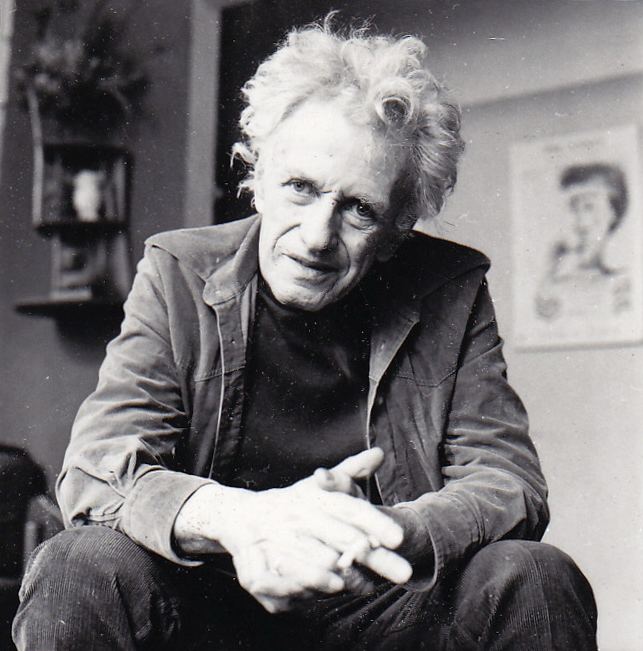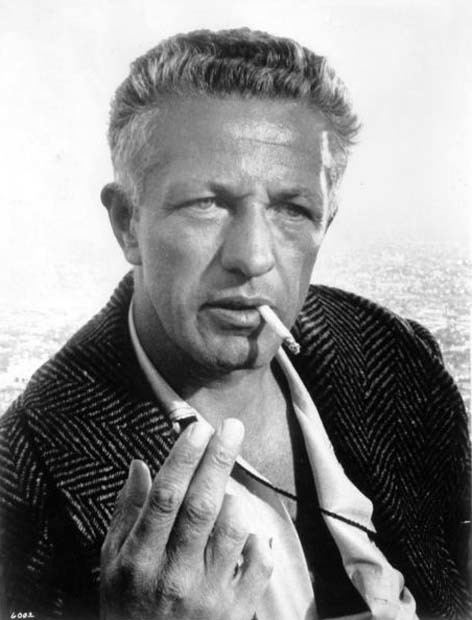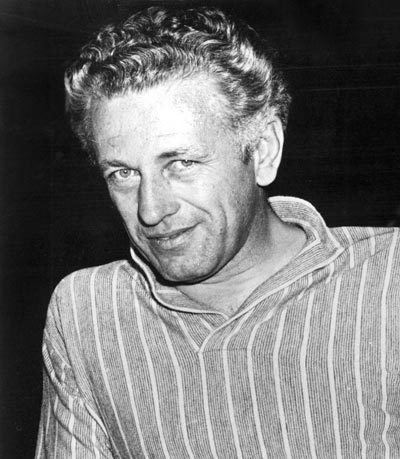Occupation Film director Years active 1948–1979 | Name Nicholas Ray Role Film director | |
 | ||
Full Name Raymond Nicholas Kienzle, Jr. Born August 7, 1911 ( 1911-08-07 ) Galesville, Wisconsin, U.S. Died June 16, 1979, New York City, New York, United States Children Anthony Ray, Timothy Ray, Nicca Ray, Julie Ray Spouse Susan Ray (m. 1969–1979) Books I was interrupted, Cambridge Architecture: A Concise Guide, Alvar Aalto Movies Rebel Without a Cause, Johnny Guitar, In a Lonely Place, They Live by Night, Bigger Than Life Similar People Gloria Grahame, Sal Mineo, James Dean, Natalie Wood, Robert Ryan | ||
Dennis hopper on nicholas ray 1997
Nicholas Ray (born Raymond Nicholas Kienzle Jr., August 7, 1911 – June 16, 1979) was an American film director best known for the movie Rebel Without a Cause.
Contents
- Dennis hopper on nicholas ray 1997
- Martin scorsese introduces johnny guitar usa 1954 dir nicholas ray
- Early life and career
- Later life
- Death
- Personal life
- Influence
- References

Ray is also appreciated by a smaller audience of cinephiles for a large number of narrative features produced between 1947 and 1963 including Bigger Than Life, Johnny Guitar, They Live by Night, and In a Lonely Place, as well as an experimental work produced throughout the 1970s titled We Can't Go Home Again, which was unfinished at the time of Ray's death from lung cancer. Ray's compositions within the CinemaScope frame and use of color are particularly well-regarded. Ray was an important influence on the French New Wave, with Jean-Luc Godard famously writing in a review of Bitter Victory, "cinema is Nicholas Ray."

Martin scorsese introduces johnny guitar usa 1954 dir nicholas ray
Early life and career

Ray was born in Galesville, Wisconsin, the son of Olene "Lena" (Toppen) and Raymond Joseph Kienzle, a contractor and builder. His paternal grandparents were German and his maternal grandparents were Norwegian. He grew up in La Crosse, Wisconsin. A popular but erratic student prone to delinquency and alcohol abuse, Ray spent much of his adolescence with his older sister in Chicago, Illinois, where he immersed himself in the Al Capone-era nightlife and attended Waller High School. Upon his return to La Crosse in his senior year of high school, he emerged as a talented orator (winning a contest at local radio station WKBH that included a modest scholarship to "any university in the world") and hung around a local stock theater. With strong grades in English & public speaking and failures in Latin, physics, and geometry, he graduated at the bottom (ranked 152nd in a class of 153) of his class at La Crosse Central High School in 1929. He studied drama at La Crosse State Teachers College (now the University of Wisconsin–La Crosse) for two years before earning the requisite grades to matriculate at the University of Chicago in the fall of 1931. Although he spent only one semester at the institution because of excessive drinking and poor grades, Ray managed to cultivate relationships with Frank Lloyd Wright and dramatist Thornton Wilder, then a professor. He received a Taliesin Fellowship from Wright to study under him as an apprentice.

During the Great Depression, Ray was employed by the Federal Theatre Project, part of the Works Progress Administration. He befriended folklorist Alan Lomax and traveled with him through rural America collecting traditional vernacular music. Lomax and Ray produced "Back Where I Come From", a pioneering folk music radio program featuring such artists as Woody Guthrie, Burl Ives, Leadbelly, and Pete Seeger. American folk songs would later figure prominently in several of his films. In 1944 he was Elia Kazan's assistant on the shooting of "A Tree Grows in Brooklyn.

Ray directed his first and only Broadway production, the Duke Ellington musical Beggar's Holiday, in 1946. One year later, he directed his first film, They Live by Night. It wasn't released for two years because of the chaotic conditions surrounding Howard Hughes' takeover of RKO Pictures. An almost impressionistic take on film noir, it was notable for its extreme empathy for society's young outsiders (a recurring motif in Ray's films). Its subject matter, two young lovers running from the law, had an influence on the sporadically popular movie subgenre often called "love on the run". (Other examples are Gun Crazy, Bonnie and Clyde, Badlands, and Robert Altman's 1974 retelling of the novel used for They Live by Night, Thieves Like Us.)
The New York Times gave the film a positive review (despite calling Ray's trademark sympathetic eye to rebels and criminals "misguided") and acclaimed Ray for "good, realistic production and sharp direction...Mr. Ray has an eye for action details. His staging of the robbery of a bank, all seen by the lad in the pick-up car, makes a fine clip of agitating film. And his sensitive juxtaposing of his actors against highways, tourist camps and bleak motels makes for a vivid comprehension of an intimate personal drama in hopeless flight."
Ray made several more contributions to film noir, most notably the 1950 Humphrey Bogart movie In a Lonely Place, about a troubled screenwriter, and On Dangerous Ground, a police thriller.
Other minor noir films he directed in this period were Born to Be Bad and A Woman's Secret.
Ray's most productive and successful period was the 1950s. In the mid-fifties he made the two films for which he is best remembered: Johnny Guitar (1954) and Rebel Without a Cause (1955). The former was a Western starring Joan Crawford and Mercedes McCambridge in action roles of the kind customarily played by men. Highly eccentric in its time, it was much loved by French critics. (François Truffaut called it "the beauty and the beast" of Westerns). In 1955, Ray directed Rebel Without a Cause, starring James Dean in what proved to be his most famous role. When Rebel was released, soon after Dean's early death in an automobile crash, it had a revolutionary impact on movie-making and youth culture, virtually giving birth to the contemporary concept of the American teenager. Looking past its social and pop-culture significance, Rebel Without a Cause is the purest example of Ray's cinematic style and vision, with an expressionistic use of colour, dramatic use of architecture, and an empathy for social misfits.
Rebel Without a Cause was Ray's biggest commercial success, and marked a breakthrough in the careers of child actors Natalie Wood and Sal Mineo. Ray engaged in a tempestuous "spiritual marriage" with Dean, and awakened the latent homosexuality of Mineo, through his role as Plato, who would become the first gay teenager to appear on film. During filming it was rumored that Ray began a short-lived affair with Wood, who at age 16 was 27 years his junior. This created a tense atmosphere between Ray and Dennis Hopper, who was also involved with Wood at the time, but they were reconciled later.
In 1956, Ray directed the melodrama Bigger Than Life starring James Mason as a small-town school teacher driven insane by the misuse of a new wonder-drug, Cortisone. In 1957, he directed The True Story of Jesse James, which was supposed to have featured James Dean but starred Robert Wagner due to Dean's death.
Later life
Some biographers state that Ray — whom they allege to have begun to sexually experiment with men during his stint at the University of Chicago — was bisexual. He denied this in 1977, but stated that everyone has occasional fantasies or daydreams about same-sex relations.
A heavy user of drugs and alcohol, Ray found himself increasingly shut out of the Hollywood film industry in the early 1960s, though he continued working. After collapsing on the set of 55 Days at Peking (1963), he did not direct again until the mid-1970s.
In 1970 at a Grateful Dead concert at the Fillmore East, Ray ran into Dennis Hopper, who asked Ray to join him at his ranch in Taos, New Mexico, where he was editing his new film, The Last Movie. Hopper helped Ray secure a position at Harpur College of Arts and Sciences at Binghamton University in upstate New York. From 1971 to 1973, Ray taught filmmaking where he and his students produced We Can't Go Home Again, an autobiographical film employing multiple superimpositions. In the spring of 1972, Ray was asked to show some footage from the film at a conference. The audience was shocked to see footage of Ray and his students smoking marijuana together. An early version of the film was shown at the Cannes Film Festival in 1973, but Ray, never satisfied with the project, continued editing it until his death in 1979.
The extemporaneous, improvisational nature of We Can't Go Home Again placed Ray in conflict with colleagues such as Ken Jacobs and Larry Gottheim in the university's New American Cinema-oriented film department, and his contract at Binghamton was not renewed in the spring of 1973. With the help of old friends, he would eventually secure teaching positions at the Lee Strasberg Institute and New York University, where he mentored graduate student Jim Jarmusch.
Death
Shortly before his death he collaborated on the direction of Lightning Over Water (also known as Nick's Film) with German director Wim Wenders. He died of lung cancer on June 16, 1979 in New York City after a two-year illness. Ray died the same week as John Wayne, the star of Flying Leathernecks, a film Ray directed (Wayne had died on June 11). He was buried at Oak Grove Cemetery.
Personal life
Ray was married to:
Influence
In the decades after his professional peak, Ray continues to influence directors to this day. In particular, certain French New Wave directors and critics held Ray in high regard:
